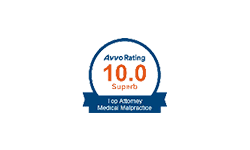A seizure is defined as abnormal electrical discharges in the brain, which cause symptoms such as convulsions, altered consciousness, and brain disturbances. Seizures in infants can indicate neonatal brain damage has occurred. Often, they are the first sign of a birth injury. Frequently, seizures develop in babies who were deprived of oxygen during the delivery process. Many seizure-causing injuries occur near or during delivery.
Hypoxic Ischemic Encephalopathy (HIE)
HIE is the most common cause of neonatal seizures. This brain injury is caused by a lack of oxygen to the brain during birth. This deprivation can occur from decreased oxygen in the baby’s blood (hypxemia/hypoxia) or decreased blood flow to the baby’s brain (ischemia).
There are a number of conditions that can cause HIE, including:
- Untreated maternal high blood pressure
- Umbilical cord injuries, such as the cord becoming wrapped around the baby’s neck (nuchal cord), umbilical cord prolapse, or cord compression.
- Uterine or placental complications, such as placenta previa, placental abruption, placental insufficiency, or ruptured uterus.
- Tachysystole (excessive uterine contractions)
- Complications due to the baby’s size or position
- Brain trauma or hemorrhages in the baby’s brain
- Improper use of delivery instruments, such as a vacuum extractor
- Delayed delivery
- Delayed emergency C-Section
- Prolonged second stage of labor
- Infection
- Kernicterus, a difficulty getting rid of the red blood cell byproduct, bilirubin.
These conditions all can put the baby at risk, though many can be diagnosed early and treated. Careful monitoring of the mother and infant for distress during the delivery process can reduce the chances of many of these injuries.
Diagnosing Seizures
The primary way to diagnose seizures after birth is with an EEG to determine the location of the brain activity causing the seizures. Electrodes will be attached to the baby’s head, and they will read the electrical activity of the brain. The results will show the changes in activity over time. These recordings can be used to pinpoint the center of the abnormal activity and indicate what part of the brain may be damaged.
Types of Seizures
There are 4 types of seizures in newborns.
- Subtle Seizures. These are often difficult to see, but occur in about 50% of all newborns with seizures. There may be repetitive facial movements, fixed gaze, or bicycling movements to indicate the seizure is occurring.
- Clonic Seizures. These are indicated by slow, rhythmic jerking on one body part. This makes up about 25% of all newborn seizures.
- Myoclonic Seizures. These involve rapid twitching or jerking movements and are the most serious. These can indicate severe brain damage.
- Tonic Seizures. These account for 5% of newborn seizures. Symptoms include sustained contractions, eyes rolling upward, and a lack of breathing for a short period.
Can I Get Help for My Child’s Seizures?
If your child has been diagnosed with seizures or HIE, you may be able to file a claim. Medical professionals have a duty of care to monitor, test, and treat their patients to prevent harm. If medical records can prove that your child suffered a birth injury due to the negligence of the medical staff assisting with your delivery, you can file for compensation. An experienced medical malpractice attorney can help you examine your records for signs of negligence, file your case, and fight for compensation.
If your child suffers from seizures after a birth injury, you need the skilled help of Philadelphia medical malpractice attorneys. Shrager, Sachs, & Blanco had been fighting for the rights of victims of medical malpractice since 1978, and we have recovered millions of dollars in compensation for our clients. Learn more about how we can help you by contacting our firm today to schedule a free case evaluation.








